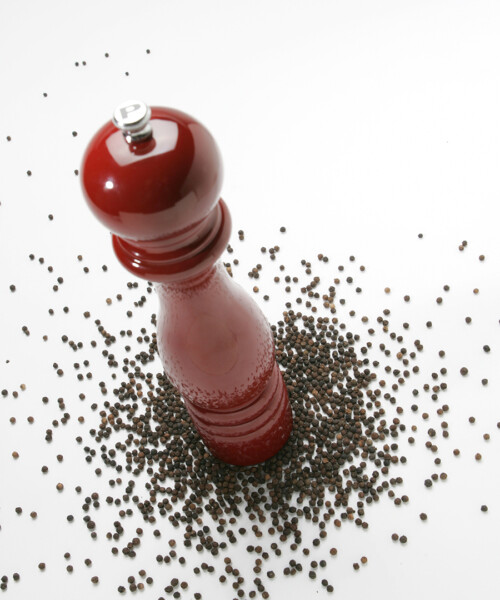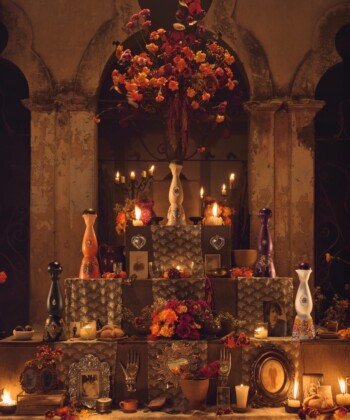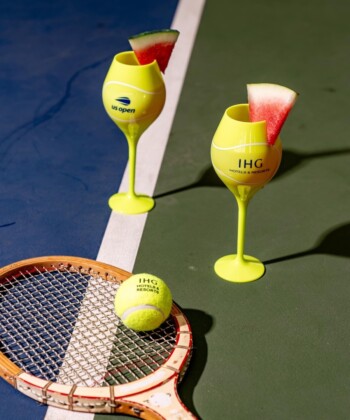We’ve all heard the straightforward guidelines for pairing wine with food, but according to top sommeliers, the art of pairing goes much deeper.
Three sommeliers went beyond recommendations for different proteins or courses, sharing their take on the myths – and tricks – of pairing wine with a dish’s spices.
Adrien Falcon, Wine Director and Sommelier, Bouley Restaurant
#1 Tip: The most important thing is to know the intensity of the dish, especially if you’re mixing two spices. If you’re having a steak with pepper, but you know you’re having ginger on the side, then you know you’re going to need something soft with fruit, but that’s intense to match the ginger.
Basil is around so many cuisines, from Thai to French, and for people like me who like Basil, we like to put a lot – basically to make a salad. The beauty of it, is it’s so wine-friendly so you can do both red and white. Go with a great Sauvignon, or lighter with Gewürztraminer or Riesling. For red go a little bit fruitier with Syrah or a fruitful Cabernet Sauvignon. Thai Basil is a little spicier, and the spicier something is you’ll really want to go more for vegetable notes. So here, I do think that white wine would be necessary; any type of Sauvignon would be very nice.
Mint is interesting because it could be everywhere and it’s very aromatic, so you’ll need an aromatic wine. Also you’ll want to bring a deeper wine, something more persistent; Muscat or any type of dry Pinot Gris would work.
Black Pepper is everywhere, so for white it would be interesting to play off the sparkling. Let’s say you do a type of meat covered with black pepper and roasted like that; Blanc de Blancs sparkling would pair really well. Alternatively, Red Pepper could go well with any kind of Sangiovese, Shiraz, Cabernet, Zinfindal, or even a deeper type of Grenache. A warning: pepper could also destroy wine very easily, like if you pair it with a fruity Pinot Noir.
Ginger is definitely not a soft spice like Basil; you put one teaspoon of ginger in your dish and there you go, your entire dish is gingery. So here you want to pair your dish with a very intense wine. Play on ginger’s sweetness with types of Riesling and Cabernet, or some of the softer late harvest like dry Chenin blanc.
Harsh Dayalani, Lead Sommelier, Tapestry
#1 Tip: There’s a misconception that white wine should always go with spicy food or that steak should always be paired with red wine. There will be dishes that feature a seared piece of steak that pairs very nicely with an oaky Chardonnay. Vice versa, salmon could go very nicely with a light-bodied Pinot Noir. People should do what we do at Tapestry: play with flavors.
Citron Peppercorn is from the south of China and give a numb-feeling to your mouth, but also has that spiced taste. This would pair really well with a Chenin blanc from South Africa. This selection definitely has citrus notes to it like apples, but also a little bit of oak to it because it’s coming from a new world wine region.
Curry leaves would go well with rosé. The leaves have that great acidity and spiciness to them, and when tasted it has a little bit of bitterness. A rich Rosé, with its fruits of pomegranates or cranberries, would really cut that. It’s the perfect between white and red.
Cinnamon can be found in a lot of Indian desserts and you’d pair that with wine such as Vin Santo from Tuscany or Tokaji from Hungary, both have very high spice on the palette as well as the notes.
Saffron gives a little spice and would go well with an Oregon Pinot Noir.
Marc Almert, Winner of Gaggenau’s 2016 International Sommelier Awards, Sommelier, Fairmont Hotel Vier Jahreszeiten, Hamburg
#1 Tip: Many diners tend to focus on the main ingredient of the dish, so maybe that’s the fish or the meat involved. I think the main link for the wine is actually the sauce.
Horseradish is great to have with a sweet wine to balance the acidity, so try for something like a German Riesling late harvest or if you wanted something sparkling try a demi-sec or half dry champagnes would be lovely.
Sesame, depending on the dish, would go lovely with an aged 20-year-old port.
Nutmeg comes around normally during the holidays and would pair well with Torrontés, the most famous white wine from Argentina, even though most people think of Argentina as a red wine country.
Clove, which is also found in a lot of winter dishes, I think would go very well with a Zinfandel from California.
Main image: Glenn Koenig / Contributor






































